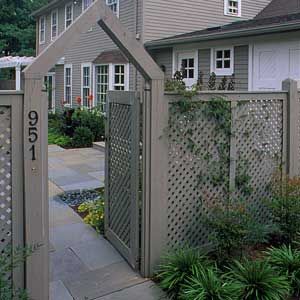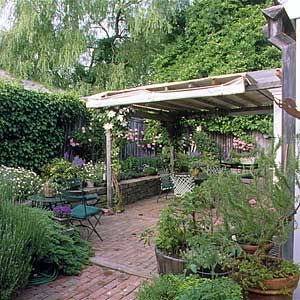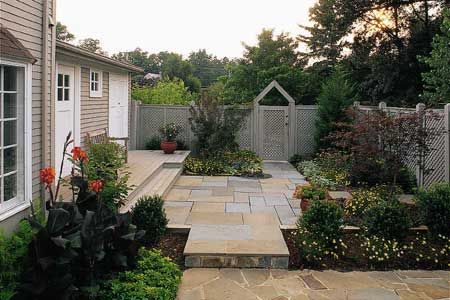Creating a private backyard oasis is a great way to make outdoor space more enjoyable. Whether you’re looking to block out nosy neighbors or create a secluded retreat, there are numerous ways to increase privacy in your backyard.
In this guide, we’ll explore various backyard privacy options, from natural solutions to structural elements, helping you transform your yard into a personal haven.
Understanding the Importance of Backyard Privacy
Privacy in your backyard offers more than just seclusion. It provides a sense of security and comfort. A well-designed private backyard can become an extension of your home, allowing you to relax, entertain, and enjoy outdoor activities without feeling exposed. Additionally, increased privacy can enhance your property’s value and improve your overall quality of life.
Assessing Your Current Backyard Situation
Before implementing privacy solutions, you’ll need to check your current backyard layout and identify areas that need attention. Walk around your yard and note spots where you feel exposed or where neighbors have a clear view. Pay attention to sightlines from second-story windows or elevated properties nearby. These areas will be your primary focus for privacy improvements.
Natural Privacy Solutions
Below, we’ll review some privacy options that provide beautiful, eco-friendly seclusion in your backyard.
Trees and Shrubs for Privacy
Trees and shrubs offer an excellent natural barrier. They not only block views but also reduce noise and dust.
When selecting plants, consider their mature height, spread, and growth rate. We recommend fastigiates or columnars, which grow tall and narrow, making them ideal for limited spaces. A mix of deciduous and evergreen plants can provide year-round coverage while adding visual interest to your landscape.
Creating a Living Fence With Hedges
Hedges are a classic choice for privacy. Depending on your preference and maintenance commitment, they can be formal (regularly trimmed) or informal.
When planting a hedge, choose plants that naturally grow to your desired height to minimize pruning. For a quick privacy solution, pick fast-growing hedge plants like Leyland cypress or Green Giant arborvitae.
Utilizing Vines for Vertical Screening
Vines are an excellent option for creating privacy in small spaces or adding greenery to existing structures. They can quickly cover fences, trellises, or arbors, providing a lush, natural screen. Fast-growing vines like golden hops or silver lace vines can cover up to 20 feet in just a year or two, offering rapid privacy solutions.
Structural Privacy Options

Structural elements can provide immediate privacy and serve as a foundation for natural screening options.
Fencing Styles and Materials
Fences are a quick and effective way to create privacy. Solid board fences offer complete privacy but can create a boxed-in feeling. Alternatively, open designs like louvers or lattice panels allow airflow and light in while concealing your space.
Remember to check local ordinances for height restrictions and setback requirements before installing a fence.
Pergolas and Arbors
Pergolas and arbors can define outdoor spaces and provide overhead privacy, especially when combined with climbing plants. These structures are particularly useful for blocking views from second-story windows or elevated properties nearby.
Privacy Screens and Panels
Freestanding privacy screens or panels offer flexibility in creating secluded areas within your yard. These can be moved as needed and are ideal for obscuring specific areas like patios or hot tubs.
Combining Plants and Structures for Optimal Privacy

For the best results, consider combining natural and structural elements to create a layered, interesting privacy barrier.
Fence and Vine Combinations
Pairing a fence with climbing vines can soften the structure’s appearance while enhancing privacy.
To avoid damage, choose vines appropriate for your fence material. For example, clinging vines like Boston ivy should be avoided on wooden fences, as they can cause deterioration.
Layered Planting Techniques
Layering plants of varying heights and textures enhances privacy and creates a lush atmosphere.
Start with taller trees or shrubs at the back, then add medium-height plants, and finish with lower-growing varieties in front.
Creative DIY Privacy Projects
For those who enjoy hands-on projects, there are several DIY options to increase backyard privacy. Here are two of our favorites.
Building a Privacy Trellis
A DIY trellis can be an affordable and customizable option. Use weather-resistant wood or metal to create a structure that fits your specific space and style. Plant fast-growing vines at the base to quickly establish a green screen.
Constructing a Green Wall
Green walls, or vertical gardens, are innovative ways to add privacy and greenery to small spaces. Build a frame, attach planting pockets or containers, and fill with various plants for a stunning living wall that provides privacy and improves air quality.
Low-Maintenance Privacy Plants
If you love the idea of natural privacy but dread maintenance work, here are two low-maintenance plant options that can help you achieve a private backyard.
Evergreen Shrubs
Evergreen shrubs such as boxwood, holly, and juniper retain their foliage all year and require upkeep. They provide consistent privacy and are easy to shape and trim.
Ornamental Grasses
Ornamental grasses grow in dense clusters and can reach impressive heights, making them perfect for privacy. They are generally low-maintenance and add a beautiful, natural look to your yard.
Clever Use of Outdoor Furniture
Strategically placing outdoor furniture can bolster your backyard’s privacy, creating cozy and intimate spaces.
Folding Privacy Partitions
Folding partitions and panels are cost-effective and easy to move around. They are ideal for smaller yards or rented properties where permanent solutions may not be feasible.
Outdoor Curtains and Canopies
Outdoor curtains and canopies offer quick and flexible privacy solutions. They can be drawn or retracted based on your needs and add a stylish touch to your outdoor décor.
Sectional Seating Arrangements
Arrange your outdoor seating in a way that creates natural barriers. Use sectional seating to define separate areas and provide seclusion.
Vibrant and Functional Outdoor Lighting for Privacy
Outdoor lighting can be more than just decorative; it can also enhance the privacy of your backyard space.
Lanterns and String Lights
Lanterns and string lights provide a soft, diffused glow that can make your backyard feel more intimate and secluded. They are perfect for evening gatherings and add a charming ambiance.
Solar-Powered Path Lights
Solar-powered path lights are both eco-friendly and practical. Placing them around the periphery of your yard can define boundaries and create a sense of enclosed space.
Spotlights for Highlighting Focal Points
Use spotlights to illuminate specific areas such as water features, sculptures, or seating arrangements. This targeted lighting can draw attention away from less secluded parts of your yard.
Maintaining Your Private Backyard Oasis
Regular maintenance is key to keeping your privacy solutions practical and attractive.
Pruning and Care for Privacy Plants
Proper pruning and care ensure your plants remain healthy and continue to provide adequate screening. Regularly trim hedges and trees to maintain their shape and density. Water and fertilize according to each plant’s specific needs.
Upkeep of Structural Elements
Inspect and maintain fences, trellises, and other structures regularly. Clean and repaint or restain wooden elements as needed to protect them from weathering and extend their lifespan.
Legal Considerations and Neighborly Etiquette To Maintain Privacy
When implementing privacy solutions, you must stay within legal boundaries and maintain good relationships with your neighbors.
Understanding Local Ordinances
Before starting any privacy project, check local zoning laws and homeowners’ association rules regarding fence heights, setbacks, and plant restrictions. Compliance will prevent potential legal issues down the line.
Communicating With Neighbors About Privacy Plans
As a courtesy, discuss your privacy plans with adjacent neighbors, especially if you’re considering changes along property lines. Open communication can prevent misunderstandings and may lead to collaborative solutions that benefit both parties.
Our Conclusion
Creating a private backyard retreat is achievable through a combination of natural and structural solutions. By carefully assessing your space, considering both immediate and long-term privacy needs, and selecting appropriate methods, you can transform your backyard into a secluded haven.

